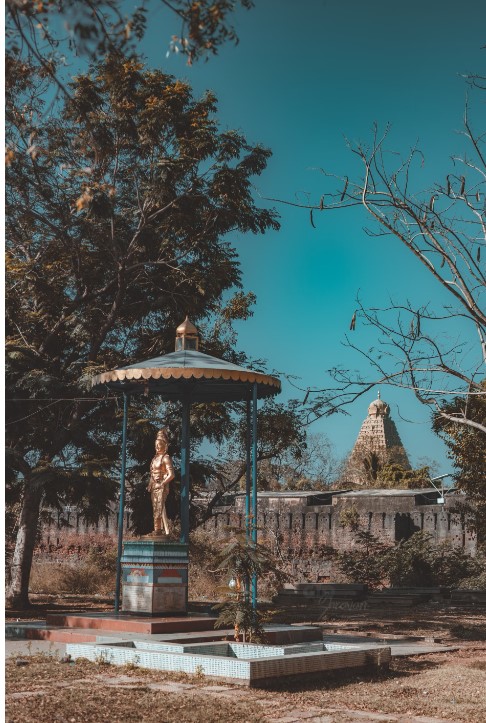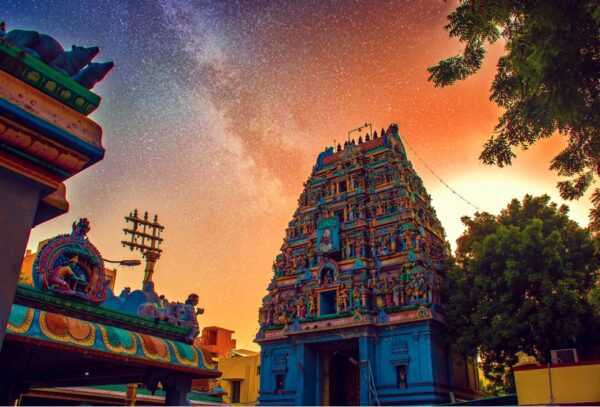Exploring the Rich Heritage of Nallur Kandaswamy Kovil-by Kalani-eLanka

Image Source:unsplash
The serene landscapes of Jaffna, Sri Lanka, lies the majestic Nallur Kandaswamy Kovil, a Hindu temple that stands as a testament to centuries-old traditions and spiritual devotion. With its towering gopurams (gateway towers), intricate sculptures, and vibrant ceremonies, the temple is not just a place of worship but a living embodiment of cultural heritage and religious significance.
The history of Nallur Kandaswamy Kovil dates back to the 10th century when the region was ruled by the Jaffna kingdom. It is believed that the original temple was constructed during this time, dedicated to the Hindu deity Lord Murugan, also known as Kandaswamy or Skanda. Over the centuries, the temple underwent several renovations and expansions, reflecting the evolving architectural styles and religious practices of the region.
One of the most notable periods in the temple’s history was during the reign of King Cankili II in the 16th century. Under his patronage, Nallur Kandaswamy Kovil flourished, becoming a center of Hindu worship and culture in the Jaffna kingdom. However, the temple faced challenges during the colonial period, particularly during the Portuguese and Dutch occupations, when many of its structures were destroyed or damaged.
The architecture of Nallur Kandaswamy Kovil is a mesmerizing blend of Dravidian and indigenous styles, characterized by its colorful facades, intricate carvings, and towering gopurams adorned with sculpted deities and mythical creatures. The main sanctum, dedicated to Lord Murugan, is surrounded by smaller shrines dedicated to various Hindu gods and goddesses, creating a spiritual ambiance that enchants visitors from all walks of life.
One of the most striking features of the temple is its annual festival, known as the Nallur Festival, which attracts devotees and tourists from across the globe. During this 25-day-long celebration, the temple comes alive with processions, music, dance, and elaborate rituals, culminating in the grand chariot procession where the deity is carried through the streets in a beautifully decorated chariot, accompanied by thousands of devotees.
Beyond its religious importance, Nallur Kandaswamy Kovil holds immense cultural significance for the Tamil community in Sri Lanka and around the world. It serves as a focal point for preserving and promoting Tamil heritage, language, music, and dance, with traditional performances and cultural events held regularly within its premises.

The temple also plays a crucial role in fostering interfaith harmony and understanding, welcoming visitors of all faiths to experience its beauty and spirituality. In a world often divided by religious and cultural differences, Nallur Kandaswamy Kovil stands as a symbol of unity and tolerance, where people of diverse backgrounds come together to worship, celebrate, and appreciate the richness of human diversity.
Nallur Kandaswamy Kovil is more than just a place of worship; it is a living heritage that embodies the timeless traditions, values, and beliefs of the Tamil people. Its majestic architecture, vibrant festivals, and profound spiritual atmosphere continue to inspire awe and reverence in all who visit, leaving an indelible mark on the hearts and minds of those touched by its divine presence.
As we reflect on the rich history and cultural legacy of Nallur Kandaswamy Kovil, let us embrace the lessons of unity, diversity, and shared humanity that it imparts, reminding us of the interconnectedness of all people and the enduring power of faith and devotion.







